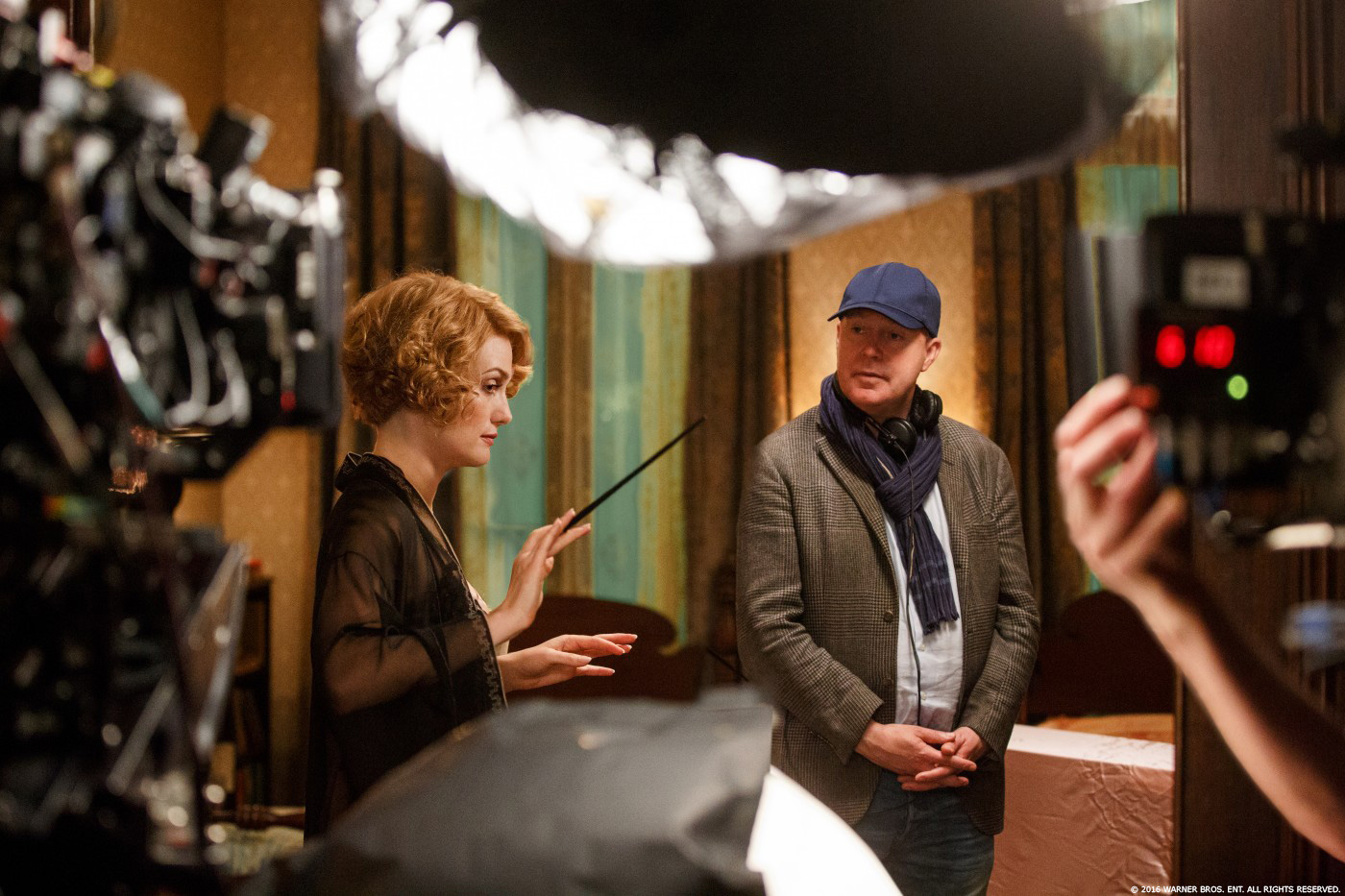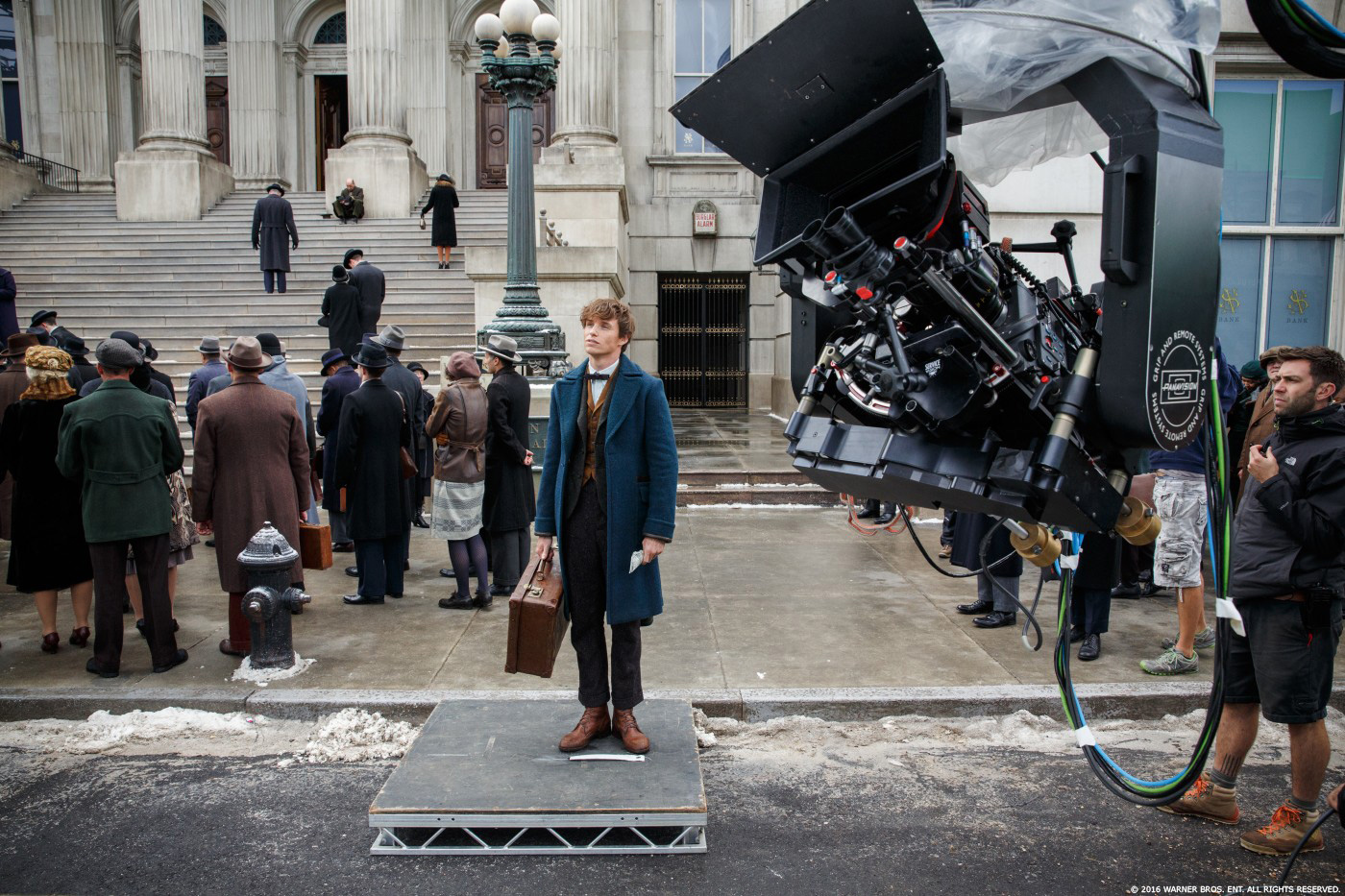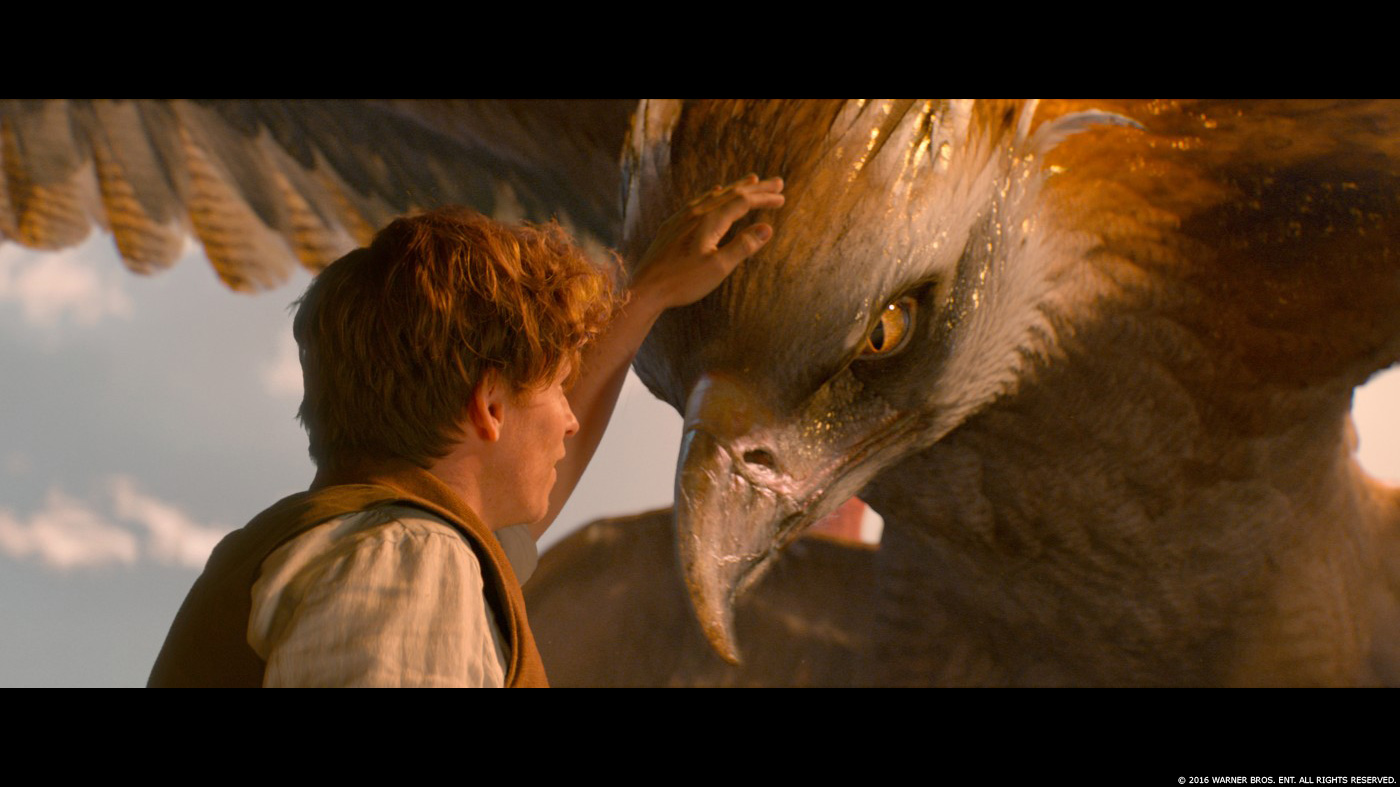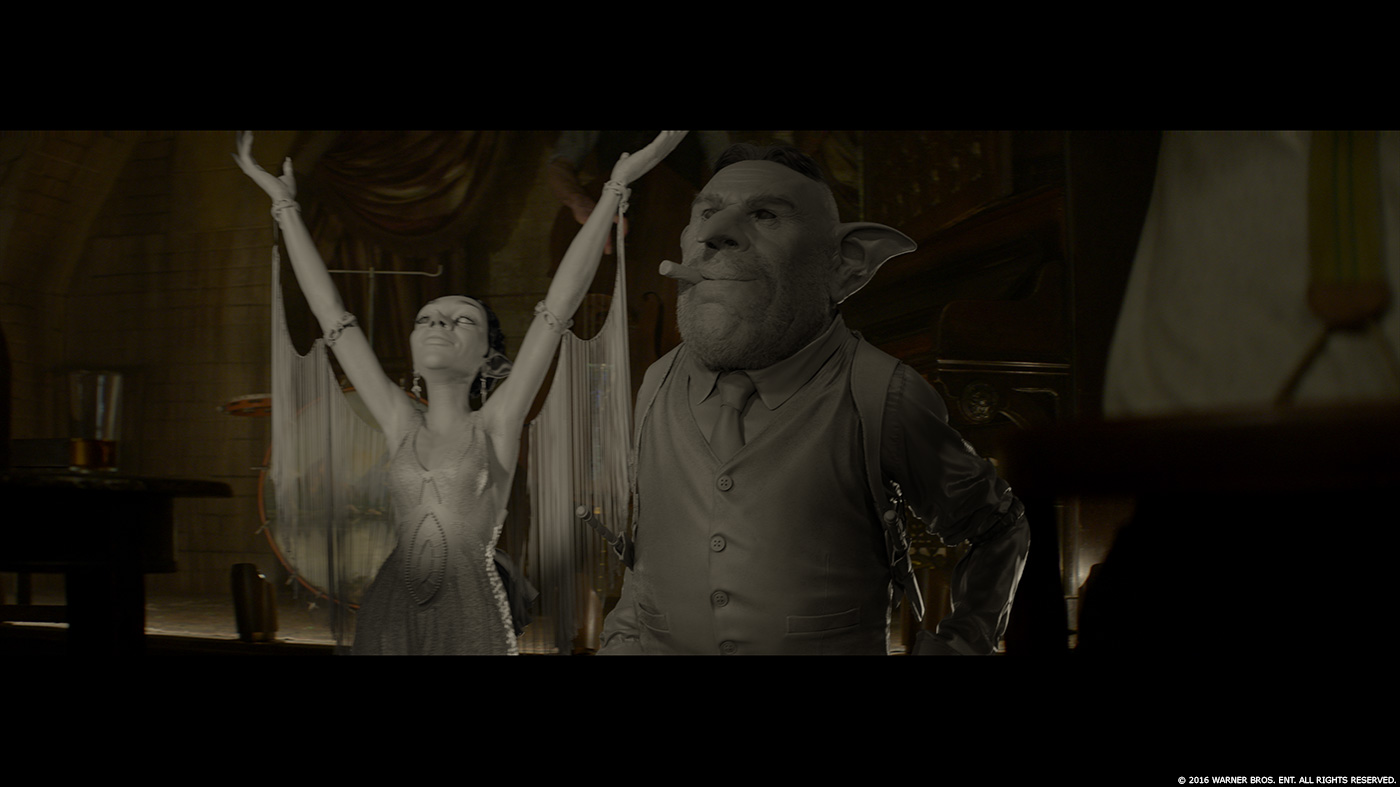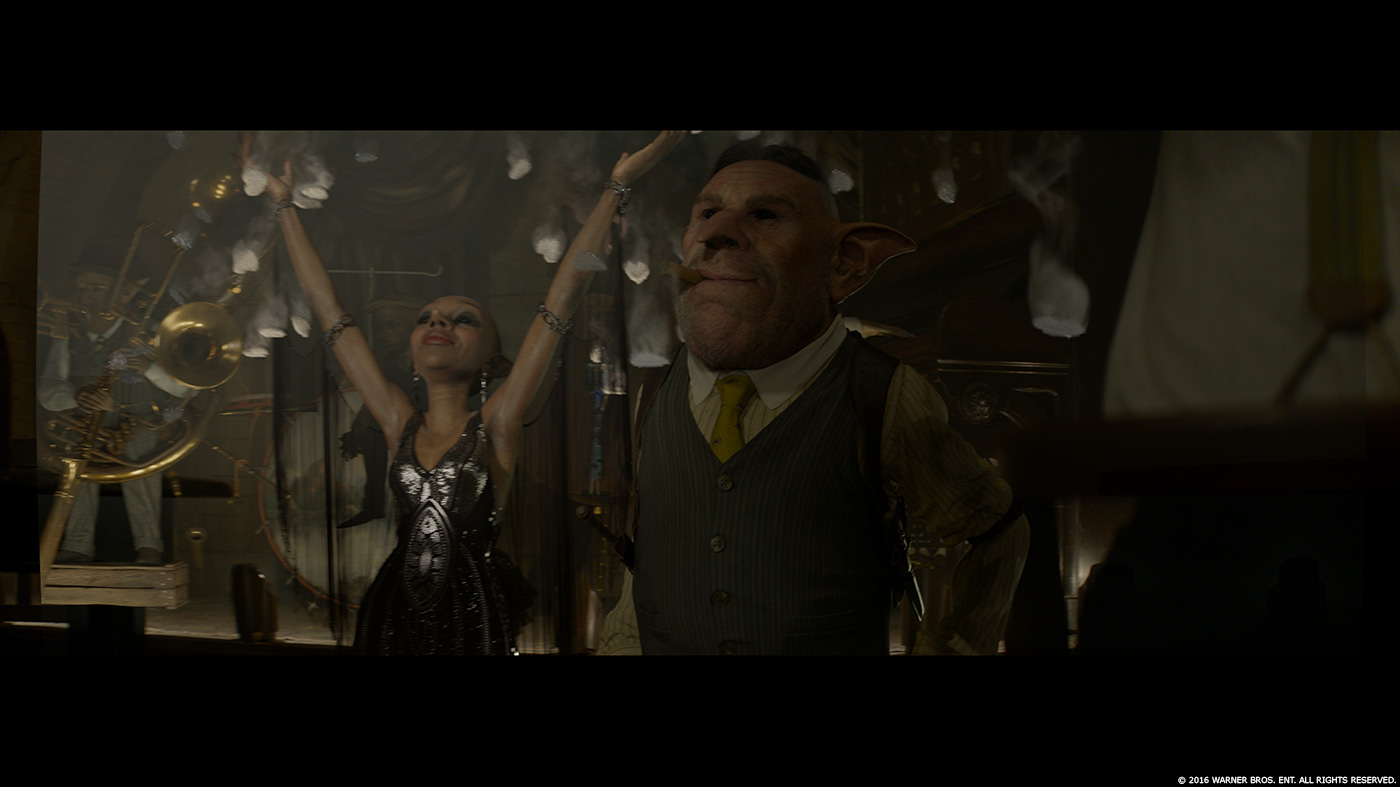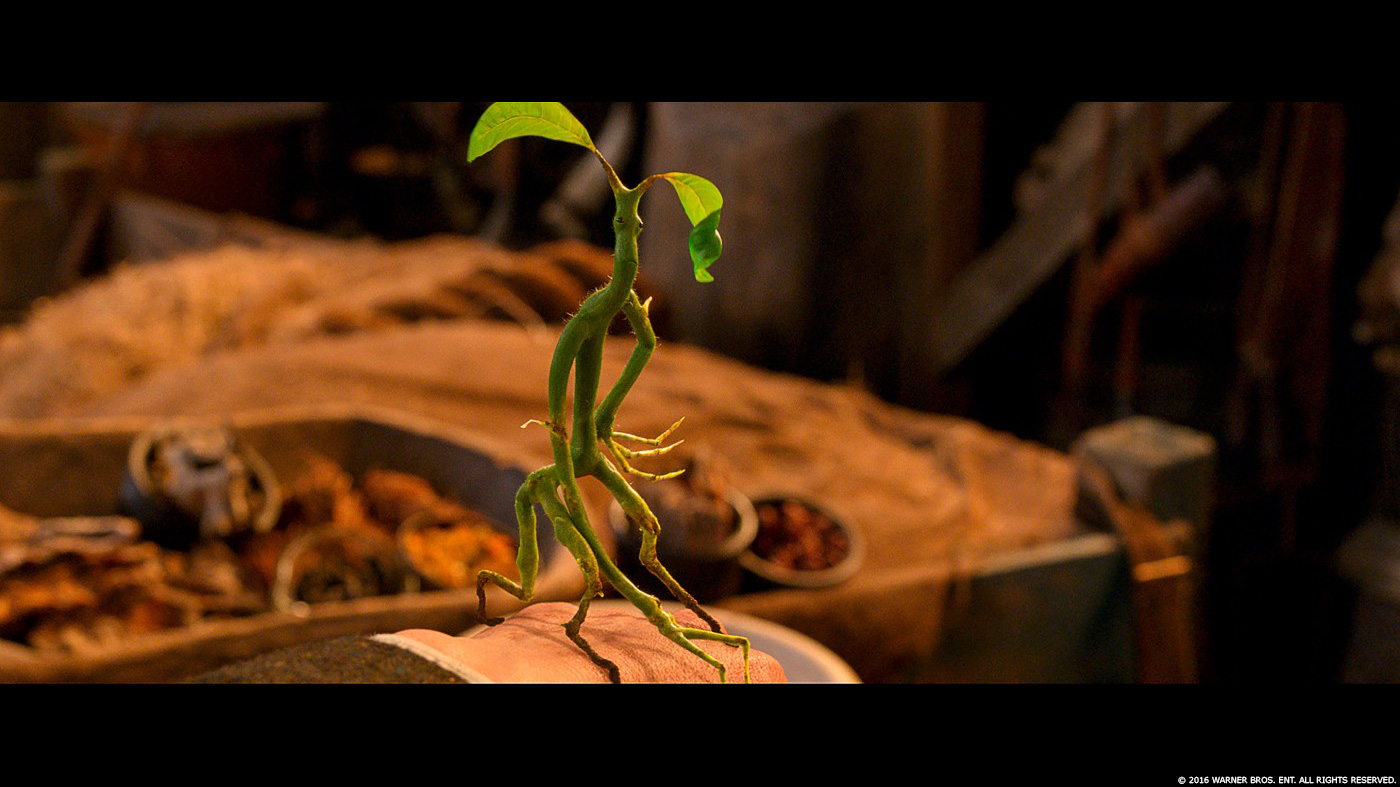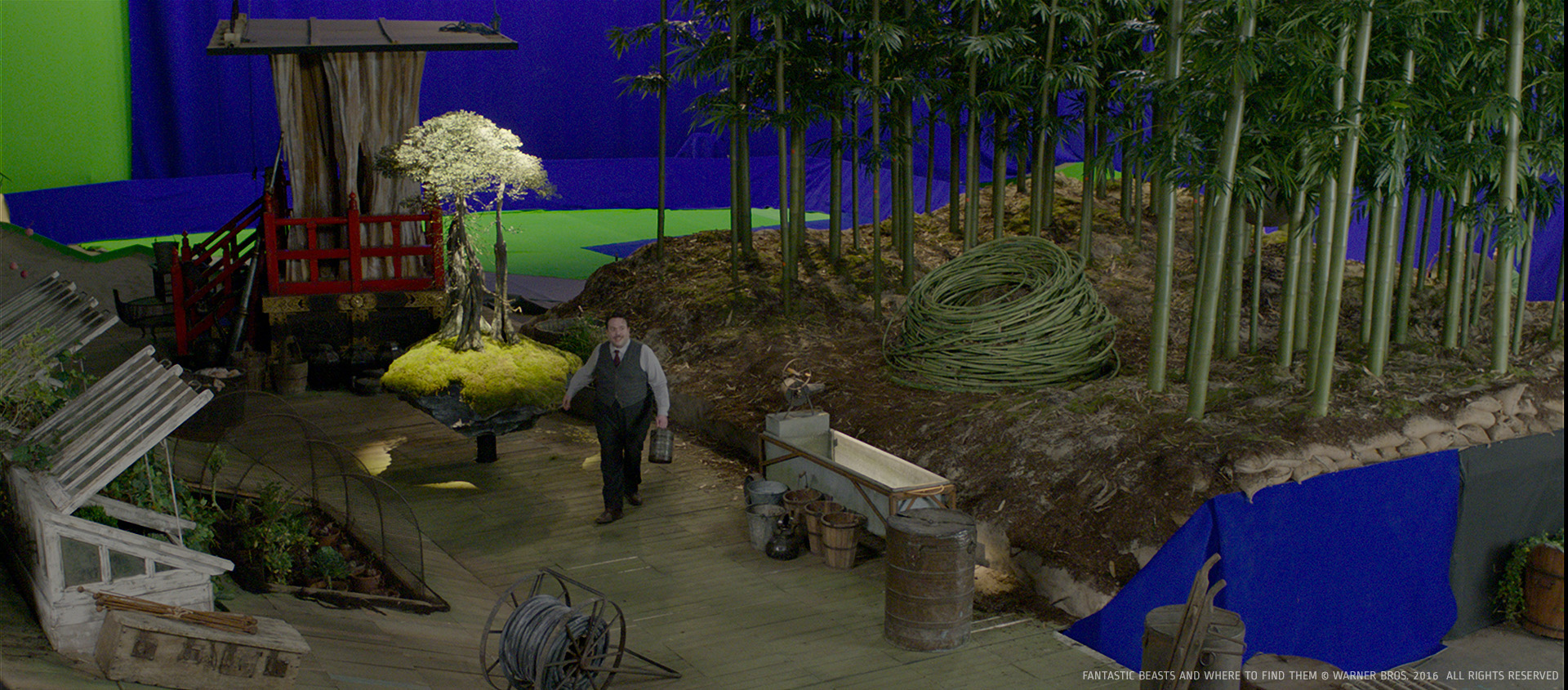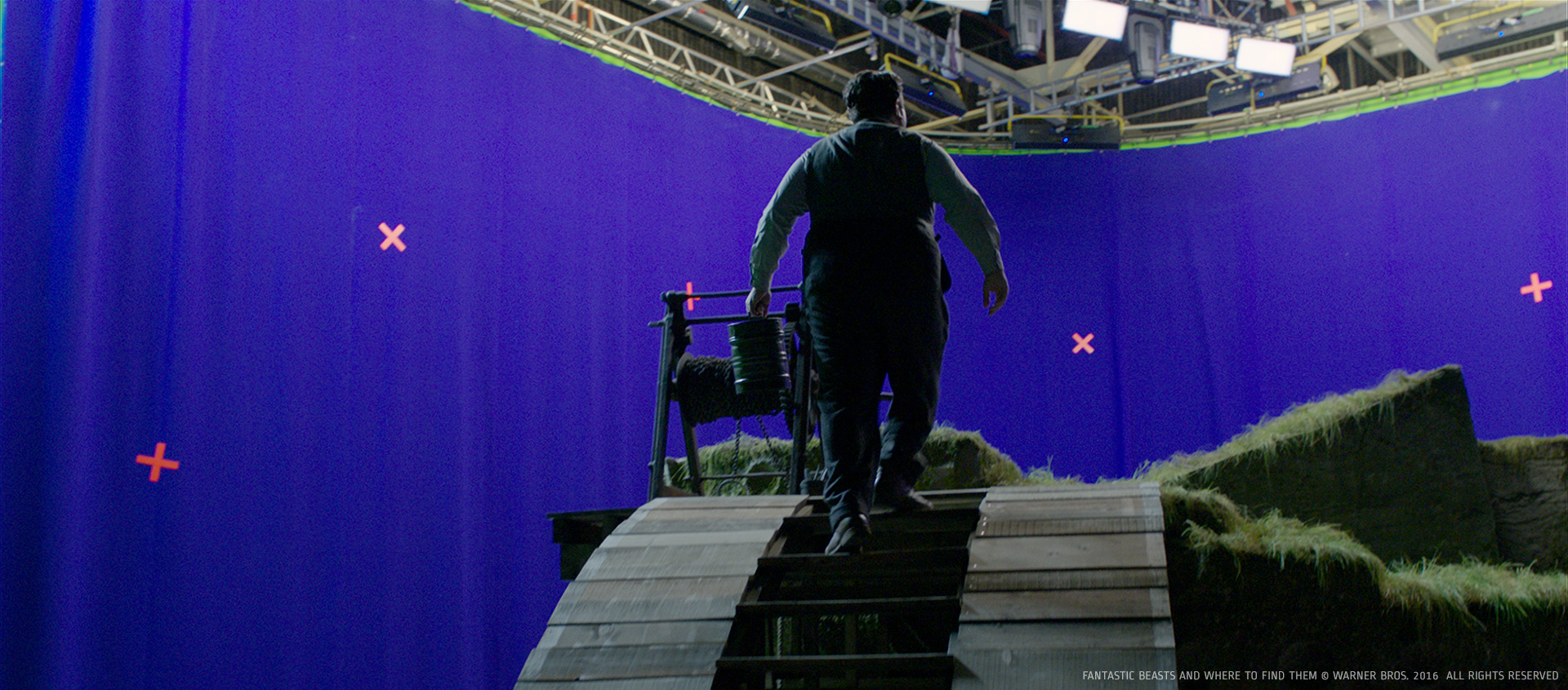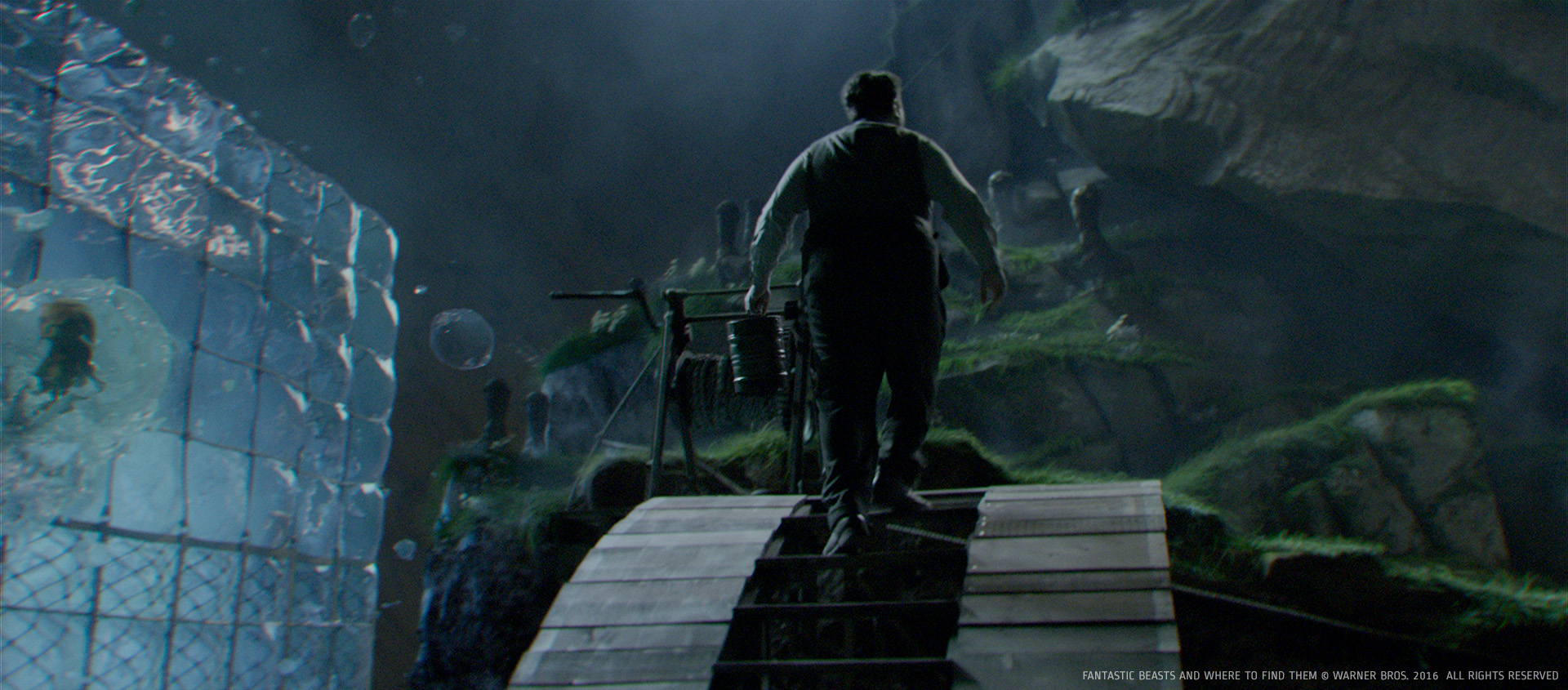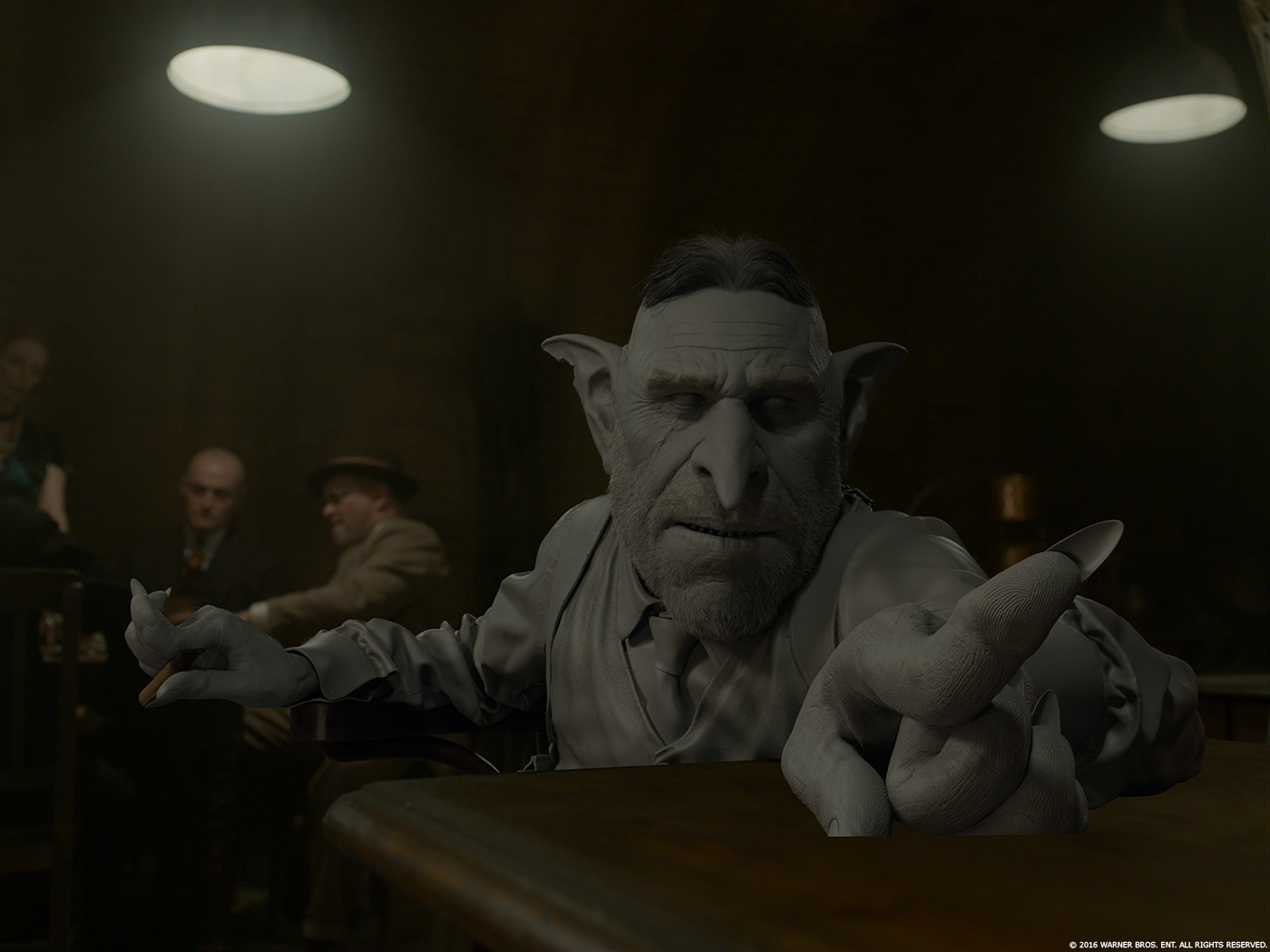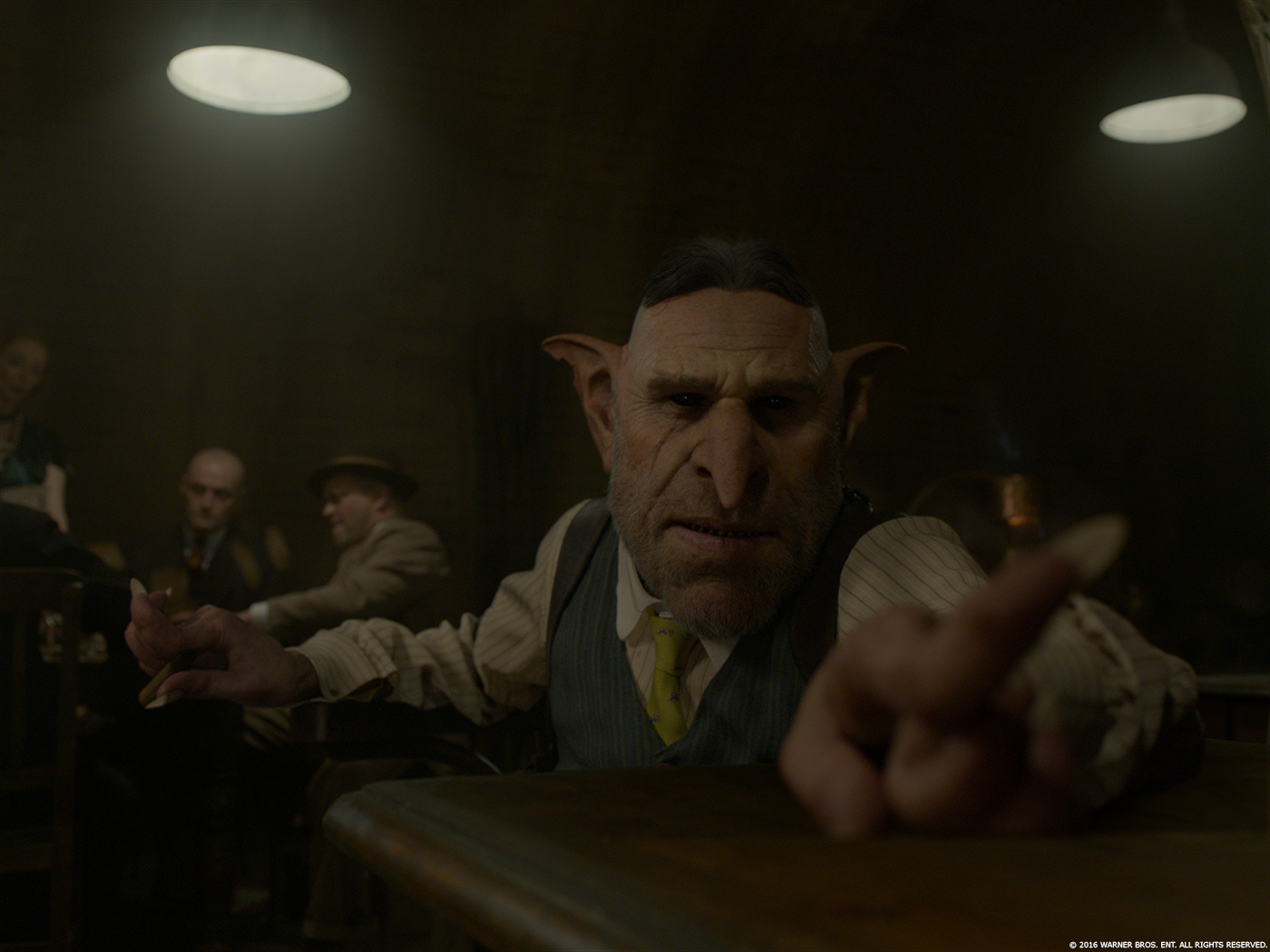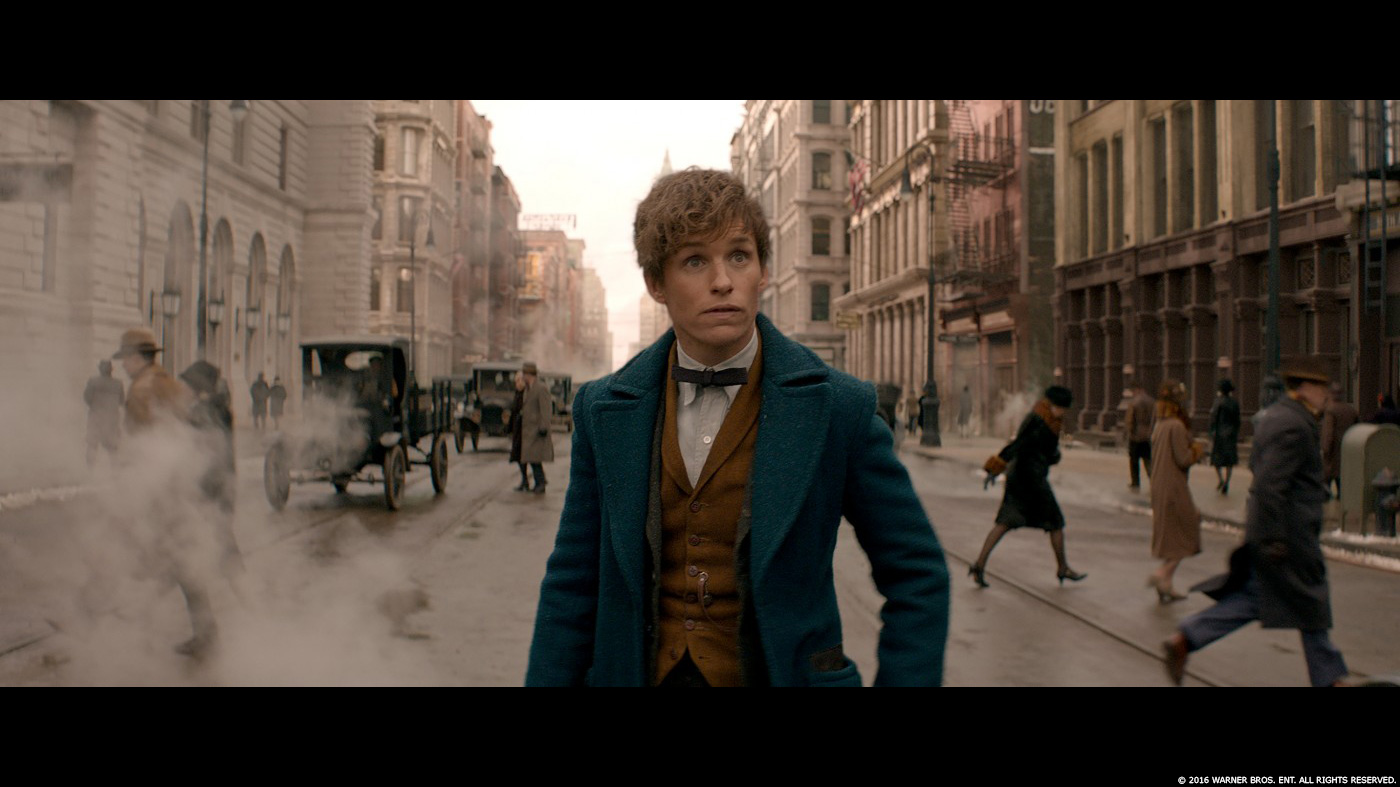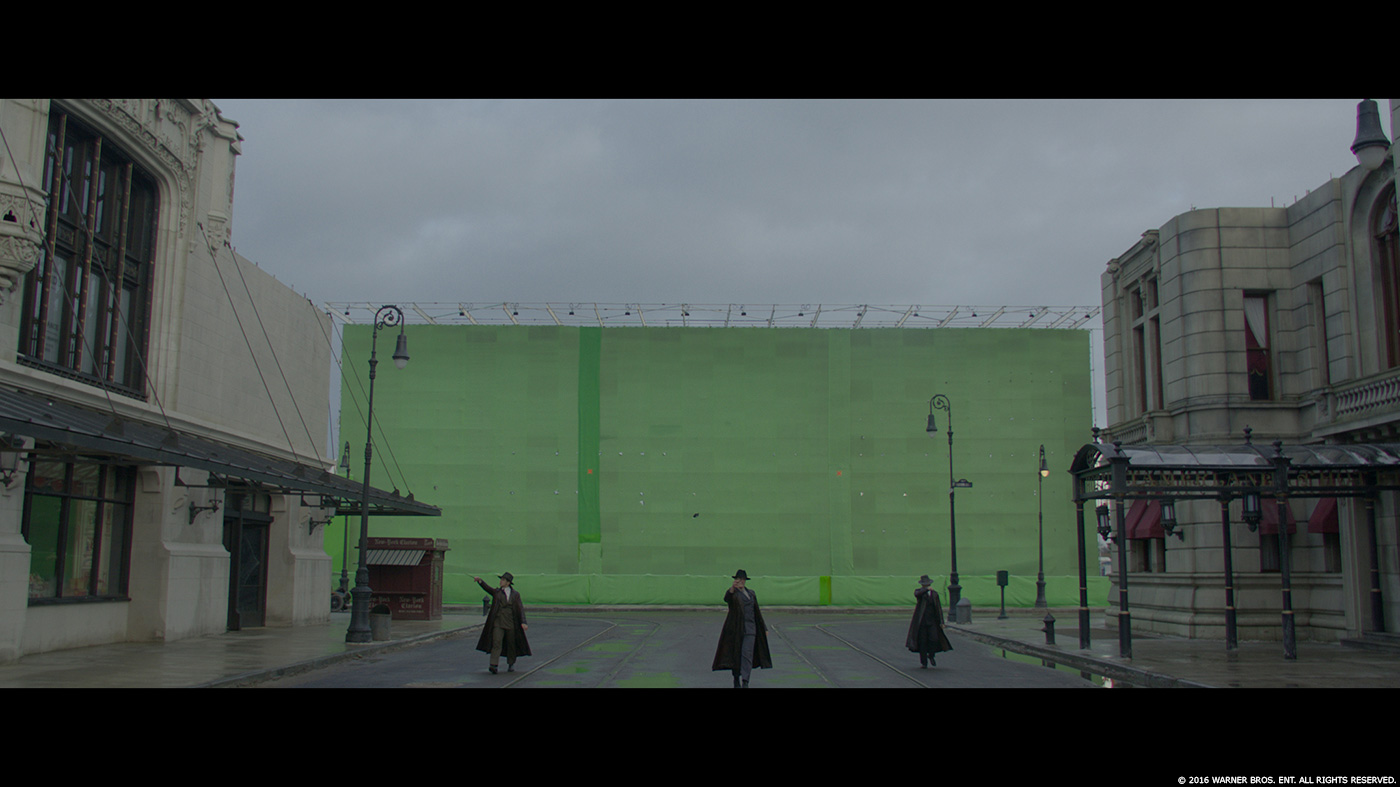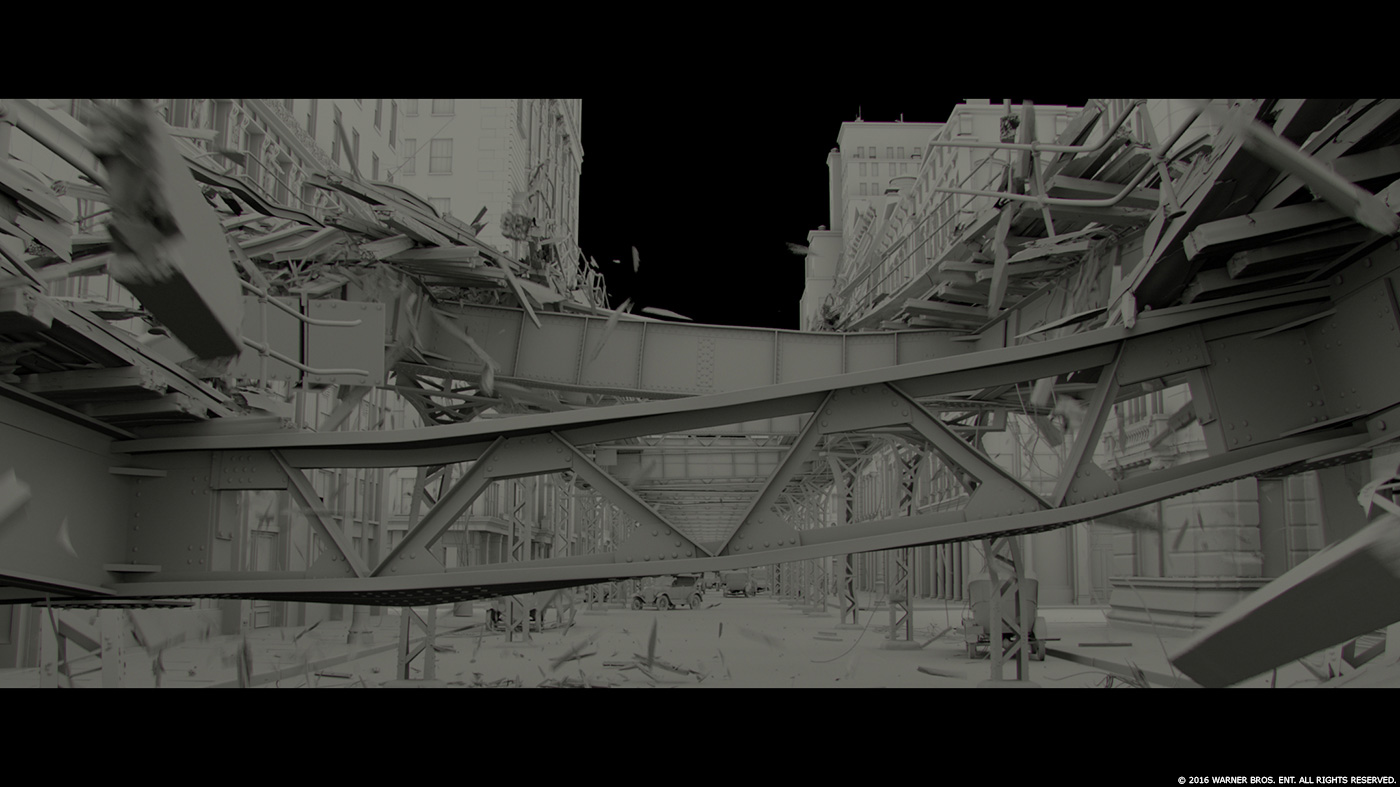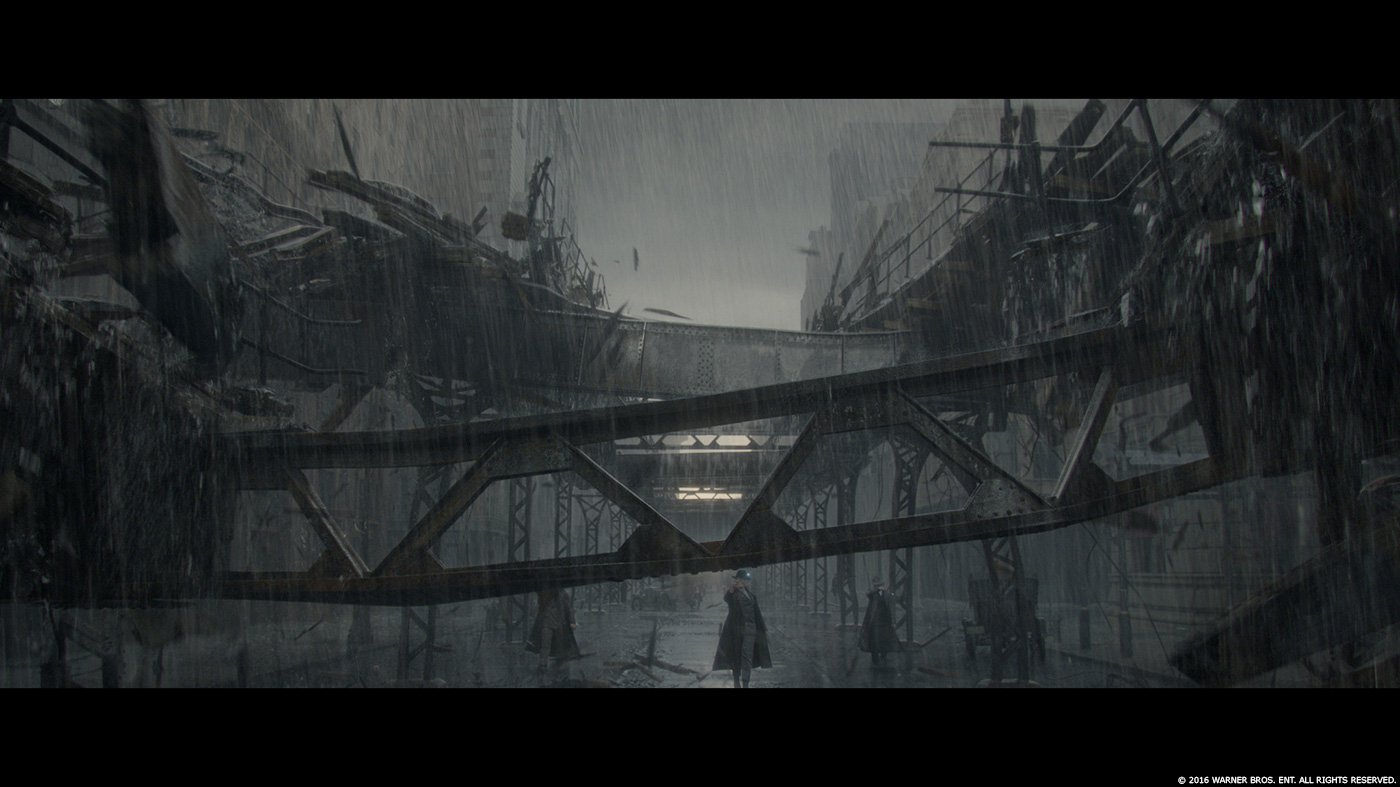In 2014, Christian Manz gave insight on his role as VFX Supervisor and leading Framestore‘s work on DRACULA UNTOLD. Today he is back in the Harry Potter universe and talks about the challenges on FANTASTIC BEASTS AND WHERE TO FIND THEM.
Can you tell us more about your role as Creative Director at Framestore?
I’ve been at Framestore for nearly 20 years now. For the last 6 years as a VFX Supervisor I have worked production side and that insight helps my job as Creative Director for the film division. I will meet with Directors and Producers to help sell the amazing work the team does here and often work closely with the art department to pitch new work and to brainstorm ideas.
At what stage did you get involved in the show?
I met with David Yates and David Heyman at the end of 2014. I had worked on some of the HARRY POTTER films in various positions at Framestore but had never met them face to face. Just before Christmas I was told I’d be starting on the film in the New Year as the VFX Supervisor for the production, alongside Tim Burke – I was over the moon (and a bit terrified).
What was your feeling to be back in the Harry Potter universe?
It was exciting to get the opportunity to build a new world – this film was not only set 70 years earlier but in a real location, New York, instead of Hogwarts. J.K. Rowling’s writing is so imaginative – it was a delight and honour to be able to help to bring the script to life.
How was this new collaboration with director David Yates and VFX Supervisor Tim Burke?
I very much enjoyed working with both of them. David is a director who puts story and performance above all else and so it was great to be challenged to make sure we were also working in that way with the VFX. He was also very generous with letting us come up with ideas – if they were good, they’d make it into the film.
I had known Tim for about 10 years – he had supervised two of the HARRY POTTER films that I had worked on, so we had an established relationship and trust. We have very similar taste creatively which made the job of sharing the work much easier.
How did you split the work with VFX Supervisor Tim Burke?
Tim and I split the work by sequence. I took on the interior Newt’s Case sequence and he the Obscurus – the two being the biggest tasks. After that it was based on a sensible split of creatures and vendors.
How did you organize the work and with the team at Framestore and other facilities?
Framestore’s Pablo Grillo came on board soon after to me to help create all of the Beasts for the film – we had worked together to create Dobby and Kreacher for HAPPY POTTER AND THE DEATHLY HALLOWS PART 1. To that end Tim and I wanted to make sure Framestore had some of the key animation work in the finished film which resulted in them working on the Niffler, Pickett the Bowtruckle and the Erumpent as well as the characters in the Blind Pig (including goblins and giants).
In splitting out the rest of the work we really wanted to focus on everybody’s strengths – Double Negative‘s environment and FX world made them a good fit for the Obsucrus as well as tackling the Thunderbird. MPC worked on the Occamy and Demiguise as well as some New York environments. Tim had just done some creature work with Rodeo FX which led to them being awarded some of the creatures and environments in the case. Other companies I worked with were Image Engine, Deluxe Method Studios, Cinesite, Passion Pictures and Milk.
The show is full of creatures. What was David’s approach to them?
From the very beginning, it was clear that David wanted Fantastic creatures, not fantasy – the distinction being that he wanted them to be animals that would happily sit beside those in the real world. To that end we referenced a lot of natural history pictures and footage when designing the various beasts. David really wanted there to be a story behind each of them, no matter how brief their screen time, so that the audience and the characters could connect with them.
What are the creatures made by Framestore and the other studios you worked with?
For my half of the film, Framestore worked on the Niffler, as well as Pickett and the other Bowtruckles. They also did all of the character work – Red the Goblin lift attendant in MACUSA, Gnarlack the Goblin gangster character in the Blind Pig, the jazz singer, Giants and House Elves that populated the speak easy.
Double Negative breathed life into Frank the Thunderbird, seen first in the case and then flying around New York.
Rodeo brought the Murtlap to life alongside various creatures found in Newt’s Case – Doxies, Butterflies, Mooncalves, Nundu, Diricawls and Grindylows. The Grindylow was the only creature to have appeared on screen previously in the HARRY POTTER films so it was nice to give them a cameo. Framestore passed their assets from GOBLET OF FIRE to Rodeo to be upgraded for 2016.
Image Engine tackled the family of Graphorns as well as the giant Dung Beetles and Fwooper featured in the case. Swooping Evil was also under their remit – appearing in a few scenes.
Deluxe Method Studios created the translucent squid-like creature Newt is seen feeding with a baby bottle.
Quite a lot of complex but beautiful animation work!
How did you work with the art department to design the creatures?
Designing the creatures was a very collaborative experience – working with some very talented concept artist from the Framestore Art Department as well as freelancers, animators, modellers and previs supervisors in what was a very nonlinear process. In this I mean we would come up with a few ideas for a creature; model and rig them and then got animating. We wanted to understand whether the design would work character-wise and for what it had to do in the script. When things didn’t work we’d go back to drawing to discover a solution or maybe think of another idea and design altogether. It was great to be able to show David such fully rounded studies before we started filming and often help to mould how a scene would come together.
Can you explain about the production process of the creatures?
In our production office we had a team of about 50 artists who post-vis’ed the director’s cut of the movie. Embedded in this team were a group of Framestore animators, working under the supervision of Pablo Grillo, who worked with both The Third Floor and Proof artists. In this process we worked up the layout and animation block of all of the creatures – this happened whilst the various companies built the finished assets. Sometimes, as with the Niffler and Bowtruckle, the design was pretty much locked in at previs which then carried on through post- vis and into the shots in a fairly fluid way. There was still a lot to discover in the animation and lookdev, but we had a sense of the character and design. The same was true of the Swooping Evil creature and some of the background case creatures.
Others, especially the Thunderbird, were far less settled design-wise as we moved more towards shot production. At post-vis stage, we had a blocking that David was happy with, but the look evolved as the shots were being animated at Double Negative, which made getting the work up to the required standard more challenging in the time that we had. Everybody was more than happy with the final result though!
How did you manage the creatures’ presence on-set and their interactions with the actors?
We engaged a team of puppeteers led by Robin Guiver to help us with this task. Eddie Redmayne was keen to have something to perform against rather than the usual tennis ball on a stick and we came up with the idea of using puppets as they could both give a performance for the actors to play off and give something for the DoP to frame to. We used a wide range of stand ins ranging from a simple Glove Puppet for the Niffler, a rod operated Bowtruckle, to a 15 foot tall, 20 foot long carbon fibre framed Erumpent operated by 4 people.
Newt’s case has a variety of settings for the creatures. Can you tell us more about this beautiful sequence?
Newt’s Case was one of the most challenging sequences to conceive and complete. It was one of the few purely magical places we visit in the movie.
I worked closely with Stuart Craig and concept artist Dermot Power in designing the sequence. Whilst we were creating the creatures we would also be thinking about the environment they would exist in – the aim was to come up with a good variation of both flora and fauna for the audience to experience.
Initially we came up with a space that had photoreal environments locked together that Newt and Jacob would traverse – we discussed shooting elements on location, enhancing and linking them with magical portals. However David fed back to us that though she liked the idea, J.K. Rowling felt that it would take a better wizard than Newt to create this construct – even more powerful than Voldemort!
Stuart then came up with a much more home spun variant on the same concept – each creature has its own environment which would be like a zoo or museum diorama. Magically moving painted backdrops would give the impression of an expansive landscape whilst being on flat canvas.
I worked with Proof to previs the scene. David initially wanted to tackle it as a single shot as he was keen that it be as much of a singular experience for the audience as possible. Choreographing the camera and the action of both the characters and animals was a complex task with lots of moving parts. We wanted to layer in as much detail as we could to make the case world both rich and believable. To help us, the art department taped out a version of the potential set in an empty soundstage and we recorded a rehearsal with Eddie Redmayne and Dan Fogler. We used this to finesse some of the story telling and interaction that would be required.
Dermot Power was doing his environment concept work in Modo which meant he could share assets with Proof and we were therefore always working with the latest versions of the set. As Stuart made changes to the design we altered our scene. As we changed camera and story beats, the set would be tweaked – it really was a collaborative process.
The physical set piece filled a whole sound stage – everything that the actors would physically stand on or interact with was built physically, often a slice of an environment. The Director of Photography, Philippe Rousselot, used the previs as a guide when rehearsing the camera moves. In the end we broke the scene into multiple shots but there were still some very long ones in there which required stitching together.
After shooting, we postvis’d the whole sequence with Proof building in all of the environments, Beasts and stitching takes together. This became pretty much the blue print for all of the facilities to use in creating the final shots.
Six studios worked on the scene – Double Negative, Image Engine, Rodeo FX, Framestore, Deluxe Method Studios and MPC. Each had their own section to work on but the nature of the sequence meant that they often overlapped with as many as four working together in the same shots. This again required a collaborative approach between the supervision teams – the most complicated shared shot had a MPC Billywig being eaten by a Rodeo FX Doxy which in turn is eaten by an Image Engine Fwooper, all sat in a Deluxe Method Studios environment. The temp deliveries we had during the production proved to be a very useful dry run of sharing the various elements. Each house would do the final comp work using the renders supplied from everyone else.
It was nerve-wracking at times but everybody involved contributed to a beautiful scene that was great fun to help create.
Which creature was the most complex to bring to life?
No single one really stands out – a lot of them had their complexities whether that is creative or technical. The toughest thing was often turning something that as a piece of concept artwork had charm and character into something with the same attributes in the final shots.
…And which creature is your favourite one?
The Niffler! He’s cheeky and characterful but also completely believable as an animal – it’s been great to see the reaction that he has had from the audience!
Another big sequence by Framestore happens in a Jazz Club. Can you talk us through the creation of Gnarlack?
The Blind Pig wizard speak easy was always going to be a huge challenge because of the digital characters – Gnarlack, a Goblin singer and band as well as House Elves. Late in post we also added a giant to the cast.
Andy Kind, Pablo and myself had lead the team creating Dobby and Kreacher so in many ways this was a natural extension of that work.
The biggest challenge was the key character of Gnarlack, played by Ron Perlman. As with the creatures the character went through a series of concept designs which became more focused once Ron was cast. Paul Catlin came up with the final look which mixed an essence of the actor, gangsters of the time and the established Goblin facial features – pointy ears, nose and black eyes.
Framestore moved this into a digital sculpt which we were able to get signed off by David ahead of filming – we had Ron scanned whilst still in LA so that we could use as much of him as possible to lend to the character credibility.
On the Blind Pig set Ron performed the scene hunched down on a small seat to make sure that there was a connection between him and the other characters. We then shot the Gnarlack side of the scene with a fully costumed stand-in who was the correct height for the Goblin. This provided invaluable lighting references. We then shot the usual clean plates.
The cast then performed the scene again – this time on a simple scaled set constructed to make Perlman appear to be the required four foot high. During this run of scene Ron wore a Vicon Cara Performance Capture Headset and facial markers. We also ran four high resolution witness camera to capture his physical performance. 90 FACS poses were scanned using a still camera array. Once these FACS shapes were sculpted and targeted with the capture data at the Gnarlack rig we had the basis of a performance – it gave us a sophisticated post-vis version of the character which really helped David in cutting the scene. The finessing of Gnarlack’s performance was all key frame animation with muscle and skin simulation running over the top.
I’m really proud of what Andy, Pablo and the team achieved – the biggest leap forward compared to five years ago was how quickly we were able to show David both animation and lighting, giving us time to tweak and polish.
Magic is a key feature of the film. How did you enhance the FX elements since the Harry Potter movies?
I always loved the background magical effects in the HARRY POTTER films, as for me these ‘throw away’ elements made the world more believable. J.K. Rowling wrote a lot of this detail into the stage directions in the script – the Origami Memo Rats in the basement of MACUSA being one such example. Milk created the rats in the finished shots – a folding version blending seamlessly to one rigged to scuttle around.
One of my favourite effects was the animated cover on the book Jacob is reading in bed in the scene where Newt first goes into the case. I thought it would be fun if the cat leapt out of the illustration as Jacob yelps out in shock at seeing what Newt is doing and David loved it when he saw it for the first time. This was traditional 2D animation by Uli Meyer at Passion Pictures.
The Apparate effect was something that had been seen in the later Potter films. Tim and I were keen to update it – David wanted it to have both energy and more of a sense of volume and direction than in the previous films. We set a few houses the task of developing a new look and Deluxe Method Studios came up with the goods. The other studios used two shots they had done as a reference for their work.
Can you tell us more about the magical dinner sequence?
This was another scene that we pre-vised to work out the choreography of all of the flying plates and crockery. It wasn’t something we followed to the letter, but it was helpful to be able to show the cast what would be happening around them once we had finished our work.
Having laid out the full table setting and meal for rehearsals, everything was removed for filming of the actual takes as we’d have to animate every object as a cg version. We used simple eye line markers on wires puppeteer-ed from above the set to make sure that everyone was looking in the right places – Katherine and Alison as Tina and Queenie had created their own story of the meal preparation and we worked with them and David to make sure we had all of the beats down to include in our animation.
Proof completed the post-vis whilst Cinesite worked on the finished sequence. One of the most complicated elements was the Apple Strudel forming and cooking in mid-air. We looked at a lot of online videos of the real thing being prepared as well as having lots of reference of the one that was cooked for our day on set.
Cinesite also enhanced the sequence with other complex effects such as a floating clothes horse complete with folding underwear and Queenie’s dress which flies off a dressmakers dummy before dropping onto her.
Can you tell us more about the Boat arrival in NYC?
I always like the way New York was introduced as the young Don Corleone arrives in the city in THE GODFATHER PART II. There are no big establishers – instead the Statue of Liberty is ‘thrown away’ amidst passing ships and in a window reflection. This really resonated with David and so in designing our shots in previs we told the story of Newt and the ship with the New York architecture at the edges.
The boat was based on period reference of the type of ship that might have sailed from somewhere like the Caribbean in the 1920’s. Stuart Craig made some modifications and a partial set was constructed on the back lot. This was extended by the team at MPC – we supplied photo reference and texture photography from a White Star ship berthed in Belfast, Northern Ireland.
The full cg establishers were based on pre-vis layouts by The Third Floor – between myself and the MPC supervisor Ferran Domenech, we did a lot of research to make sure our skyline was as accurate as possible to 1926. They did a great job.
The pier we see Newt arrive in and depart from was shot in an aircraft hanger in Cardington in Bedfordshire. MPC extended the ship’s hull in a few shots and added the street beyond in the later sequence.
New York is seen through different stages and lighting conditions. Can you explain in detail about the its creation?
The decision was taken fairly early on that we would not shoot in New York itself for a couple of reasons. Not many areas of the city today match what it looked like in 1926. Stuart Craig also felt we’d get a more unified look to the film if we built our own city on the back lot at Leavesden, expanding it with digital extensions.
The nine acre set represented four areas of the city – a main avenue, Brownstones, Lower Eastside Tenements and Tribeca. When filming in each section, the rest of the set was covered in green cloth like some kind of Christo installation. Green screen trucks helped us create run off streets that would allow the hundreds of extras and period vehicles to flow into areas to which we would be adding digital set and crowd, helping make the blend as seamless as possible. It was a massive logistical exercise which was only possible because of the collaboration between lots of different departments.
I had visited New York with Stuart during pre-production where we went to about sixty different locations which offered the type of period building he wanted to include in our version of the city. Following this we commissioned a photo shoot where, over a period of a couple of months, each building was photographed in detail from the ground, other buildings and a mobile mast.
Hayley Easton Street, our VFX Art Director, worked with Stuart to design the views that would be seen in the extensions in every scene. Period reference was used and we also obeyed the geography of Manhattan as much as possible whilst creating the bold silhouettes Stuart wanted to see.
All of this material – layouts, texture photos, lidar scans and reference photos was passed onto the vendors who created the areas of the city that featured in their scenes. Framestore built Broadway and Main Avenue for the opening scenes as well as Tribeca and Central Park. Deluxe Method Studios constructed the Lower East Side and Rodeo FX worked on the area around the Woolworth Building / MACUSA. Double Negative’s work crossed all of these areas and more for their Obscurus rampage work in the third act and the reconstruction sequence at the film’s climax.
The fact that we had such a large scale set is what makes the city in the film so believable. The interaction with the physical crowd and actors with the vehicles and SFX steam vents created the hustle and bustle and texture in the foreground. We also had all of the lighting cues to match in the finished shots – whether that be in the extensions or the many that were full cg.
A lot of destruction happens and then is fixed by the wizards’ magic. Can you tell us more about these reconstruction shots and the Thunderbird’s flight over New York?
David was keen that this sequence be a set piece in itself that had an elegance to contrast with the destruction that precedes it as well as telling the story of how the magical rain storm is wiping the memories of the New York population.
In pre-vising the sequence with The Third Floor we decided to tell this story whilst following Frank the Thunderbird on his flight to freedom. We played with lots of ideas which David honed into the final pre-vis which we pretty much matched when we filmed the scene towards the end of principle photography. We used practical rain effects in some shots but filmed quite a lot of them dry to make the compositing of the digital elements less problematic.
Double Negative added the digital extensions and reconstructed the FX debris to the plate photography and created other full cg shots based on the pre-vis. Framestore created one shot for us where we see the elevated railway unbend and rise back over the street.
As well as the obvious complexity of the FX debris and rain, one of the biggest challenges was in the creation of the visual depth within the streets and making it look as photographic as possible – as usual the key was in simplifying the amount of detail seen in the wider shots. Again we looked at a lot of photographic reference to get the look we were after.
Frank’s flight leads some of the shots, whilst in others he features in the background but he was the key to linking it all together. His initial swoop into the heavens whilst creating a storm with the beat of his wings was a challenging sequence. Double Negative showed me some great videos of super cells storms which we then used as reference in creating ours. The Thunderbird’s flight cycle was something that we discovered fairly early in his conception – the wave-like rhythm of his multiple wings creating something that had both scale and majesty.
Which sequence was the most complicated to create and why?
Without a doubt, it was Newt’s Case. The number of creatures and environments as well as co-ordinating all of the companies completing the various components made it a challenge on many levels.
Was there a shot or a sequence that prevented you from sleep?
Again this would be the scene in Newt’s Case – it was only in the final hours before the deadline that I was able to show David the sequence with all of the elements that everybody had done together in the finished shots.
What do you keep from this experience?
I had an amazing time working with a lot of talented people both on the production and at all of the VFX facilities. David is a very generous director and I have learnt a lot about story telling that I’ll carry forward onto the next film.
How long have did you work on this show?
21 months.
How many shots did you oversee?
I supervised about 800 shots in my half of the film.
What was the size of your team?
There were about 10 of us in the production office but of course many hundreds in the companies in London, Montreal and Vancouver.
What is your next project?
FANTASTIC BEASTS 2…
A big thanks for your time.
// WANT TO KNOW MORE?
– Framestore: Dedicated page about FANTASTIC BEASTS AND WHERE TO FIND THEM on Framestore website.
// FANTASTIC BEASTS AND WHERE TO FIND THEM – MAKING OF BY FRAMESTORE
© Vincent Frei – The Art of VFX – 2016


